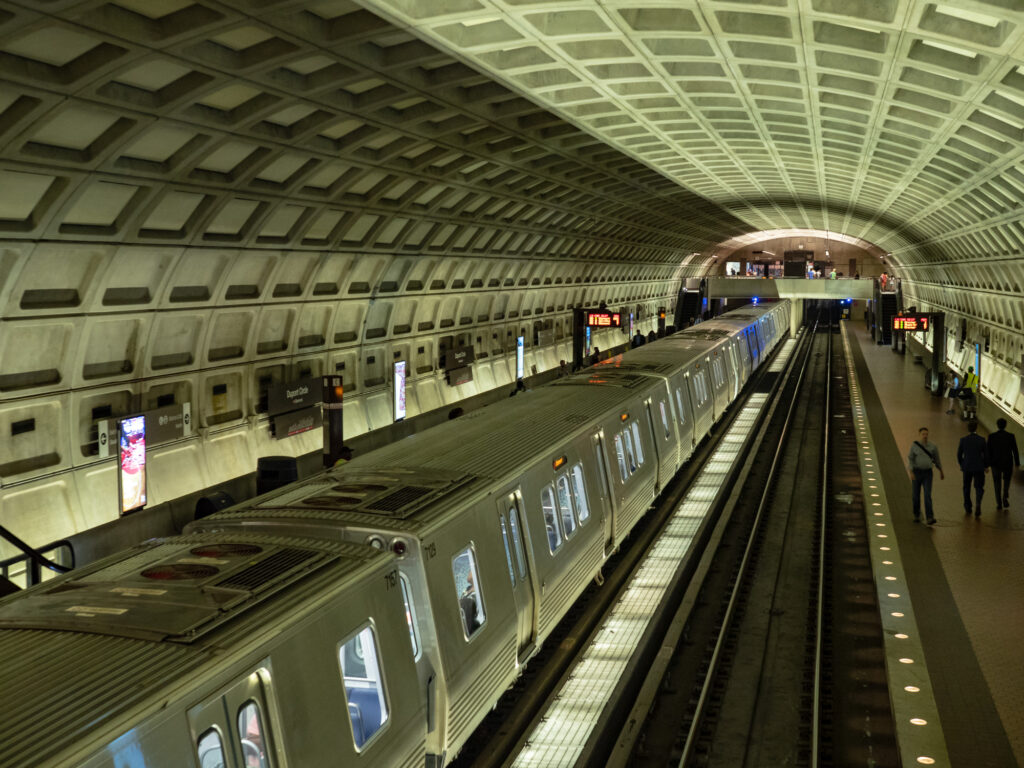
This is a bad decision. Especially right now.
Way back in August 2005, I left the sunny confines of Los Angeles for the humid swamp of our nation’s capital, eager to start my career as a reporter on Capitol Hill. (Well, as an editorial assistant, but I digress.)
Quite a few people told me I was crazy to leave beautiful Southern California for Washington, D.C., but I was excited to live on the East Coast. One of the reasons why was that I didn’t need a car, because D.C.’s Metrorail system is so robust. No more hours wasted in terrible L.A. traffic!
While D.C.’s Metrorail system isn’t without its faults, the system is still among the best in the country. In 2019, it served an average 626,000 riders each weekday, with a total of 182 million trips that year.
D.C.-area residents might curse a train delay from time to time, but they are fiercely protective of the system. The Metrorail is also a point of pride for those who built it, from its original construction to the railcars that run on the tracks today. The last time the Washington Metropolitan Area Transit Authority (WMATA) ordered new rail cars, in fact, the vehicles were made in Lincoln, Nebraska.
But now it looks like WMATA is going to go out of its way so it can import its newest batch of between 256 and 800 rail cars.
A WMATA spokesman confirmed to the Washington Post on Friday that the agency plans to use state and local funding to buy the new rail cars. This is a sneaky accounting trick to avoid Buy America preferences, which require that federally funded projects utilize 70 percent of the cost of the components produced to make the cars take place in the United States. Final assembly also would have to occur in the United States.
This is clearly a case of WMATA exploiting a loophole. It receives around $460 million in annual funding from the Department of Transportation, and recently landed another $767 million in federal coronavirus relief funds.
Importing hundreds of new rail cars instead of buying them from domestic manufacturers would be alarming at any time. But the COVID-19 shutdowns put tens of millions of Americans out of work. The economy is in catastrophic shape. We should be investing every dime of tax money back into the United States, not sending it overseas.
Alliance for American Manufacturing Scott Paul wrote to WMATA’s Board of Directors on Thursday encouraging them to reconsider this decision, and he told the Washington Post that this “strikes us as a pretty devious attempt to evade the federal procurement rules.”
One of WMATA’s chief arguments is that there are no manufacturers in the United States capable of building the new rail cars. That is, to put it mildly, a bunch of nonsense.
As Scott Paul told the Post:
There are plenty of qualified rail car manufacturers in the United States who can meet or exceed Metro’s needs, who can deliver a great product. And those dollars will be supporting American jobs, as well as an investment in the future of transit in the D.C. area.
Indeed, AAM Vice President for State Governmental Affairs Brian Lombardozzi co-authored a report for the National Institute of Standards and Technology (NIST) looking at the rail transit industry. There are at least 10 rail car builders in the United States, Lombardozzi pointed out, let alone the 750+ companies in 39 states that supply components and parts up and down the transit supply chain.
That’s what is so important about making sure that Buy America is included on taxpayer-funded projects like this. It’s not just about the finished rail car, but about all the parts that go into it.
Buy America would ensure that at least 70 percent of the cost of those parts are Made in America. Think about how much taxpayer money would be pumped back into the economy, and all the potential jobs such an effort would support. Awarding a contract of this size to one of those 10 rail car builders, meanwhile, could very well allow them to scale up and hire new people – that’s good news during any time, let alone right now.
Instead, it looks like WMATA will go out of its way to bypass Buy America guidelines and import the new rail cars, sending millions of taxpayer dollars overseas.
And here’s another catch: Avoiding Buy America might also be a workaround for the Chinese state to nab a U.S. taxpayer funded project. Chinese state-owned company CRRC originally bid on the project, but Congress banned its participation, citing major economic and national security concerns.
Without Buy America, however, it’s a near certainty that parts made by Chinese state-owned companies – including, potentially, CRRC! – will make it into the new rail cars.
The WMATA spokesman told the Washington Post that it is still early in the process, so it’s unclear who will eventually land the project. He also stressed that 8 percent of the project's components will be made in the mid-Atlantic region (a far cry from the 70 percent Buy America threshold).
If WMATA does end up opting to bypass Buy America, it will be a wasted opportunity to create jobs, boost the economy, and build a brighter future for D.C.'s Metrorail.
Join me in taking action: Tell the WMATA Board of Directors (and your Members of Congress, who oversee Metrorail’s federal funding) that new Metrorail cars should be Made in America.
